本文介绍了PPO算法及其实践。PPO是对策略梯度的改进,通过重要性采样将在线学习转为离线学习,能重复利用数据提升效率,PPO2通过clip限制偏差。文中还给出了基于MountainCar-v0环境的PPO实现代码,包括网络结构、数据处理和更新流程,最后展示了训练过程与效果。
☞☞☞AI 智能聊天, 问答助手, AI 智能搜索, 免费无限量使用 DeepSeek R1 模型☜☜☜
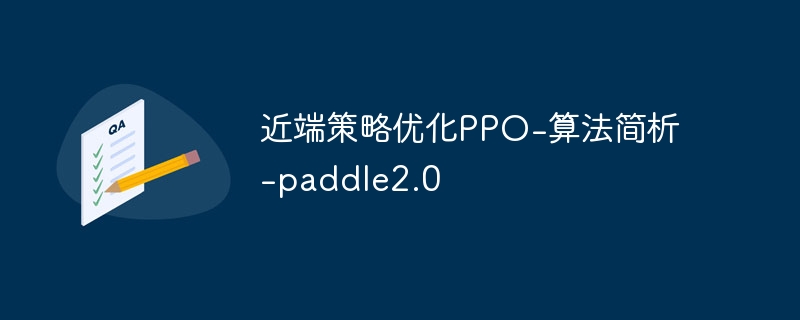
Proximal Policy Optimization,简称PPO,即近端策略优化,是对Policy Graident,即策略梯度的一种改进算法。PPO的核心精神在于,通过一种被称之为Importce Sampling的方法,将Policy Gradient中On-policy的训练过程转化为Off-policy,即从在线学习转化为离线学习,某种意义上与基于值迭代算法中的Experience Replay有异曲同工之处。通过这个改进,训练速度与效果在实验上相较于Policy Gradient具有明显提升。
import argparseimport picklefrom collections import namedtuplefrom itertools import countimport timeimport os, timeimport numpy as npimport matplotlib.pyplot as pltimport gymimport paddleimport paddle.nn as nnimport paddle.nn.functional as Fimport paddle.optimizer as optimfrom paddle.distribution import Normal, Categoricalfrom paddle.io import RandomSampler, BatchSampler, Datasetfrom visualdl import LogWriter
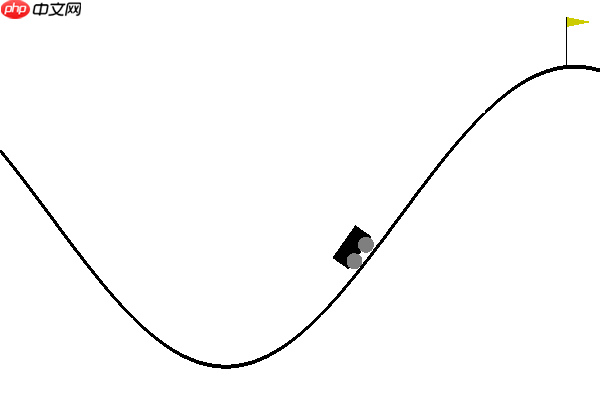
# Parametersenv_name = 'MountainCar-v0'gamma = 0.99render = Falseseed = 1log_interval = 10env = gym.make(env_name).unwrapped
num_state = env.observation_space.shape[0]
num_action = env.action_space.n
env.seed(seed)
Transition = namedtuple('Transition', ['state', 'action', 'action_prob', 'reward', 'next_state'])Actor部分定义的是“演员”,Critic部分定义的是“评论家”。“评论家”网络观察输入并“打分”,“演员”网络接收输入并给出行动的概率。
class Actor(nn.Layer):
def __init__(self):
super(Actor, self).__init__()
self.fc1 = nn.Linear(num_state, 128)
self.action_head = nn.Linear(128, num_action) def forward(self, x):
x = F.relu(self.fc1(x))
action_prob = F.softmax(self.action_head(x), axis=1) return action_probclass Critic(nn.Layer):
def __init__(self):
super(Critic, self).__init__()
self.fc1 = nn.Linear(num_state, 128)
self.state_value = nn.Linear(128, 1) def forward(self, x):
x = F.relu(self.fc1(x))
value = self.state_value(x) return valuepolicy gradient为on-policy,sample一次更新完actor之后,actor就变了,不能使用原来的数据了,必须重新与Env互动收集新数据,这导致训练需要大量互动,降低效率。
而PPO算法不仅可以将一次采样的数据分minibatch训练神经网络迭代多次,而且能够重复利用数据,也就是sample reuse。
由于训练中使用了off policy的数据(只有第一个更新是on policy,后面都是off policy),数据分布不同了,所以PPO使用了importance sampling来调整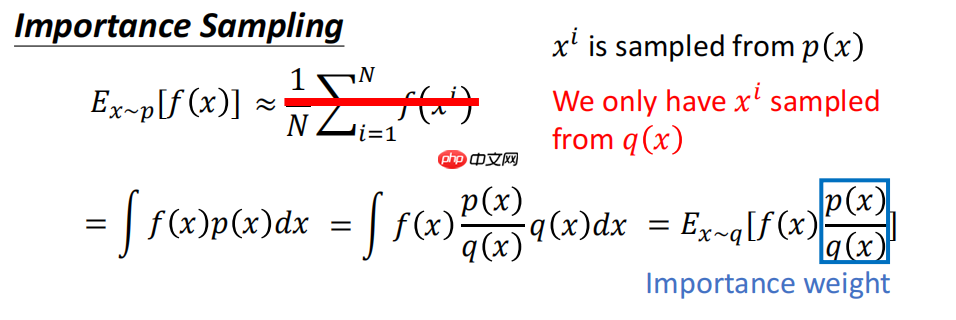
研究了使用重要性采样实现on policy 到off policy的转换,我们知道期望值几乎是差不多的,计算了方差的公式,最后发现第二项对于方差的影响是很小的,但是第一项对于方差的影响还是有的。于是我们晓得,当使用重要性采样的时候,要保证只有p(x)和q(x)的区别不大,才会使得方差的区别很小。
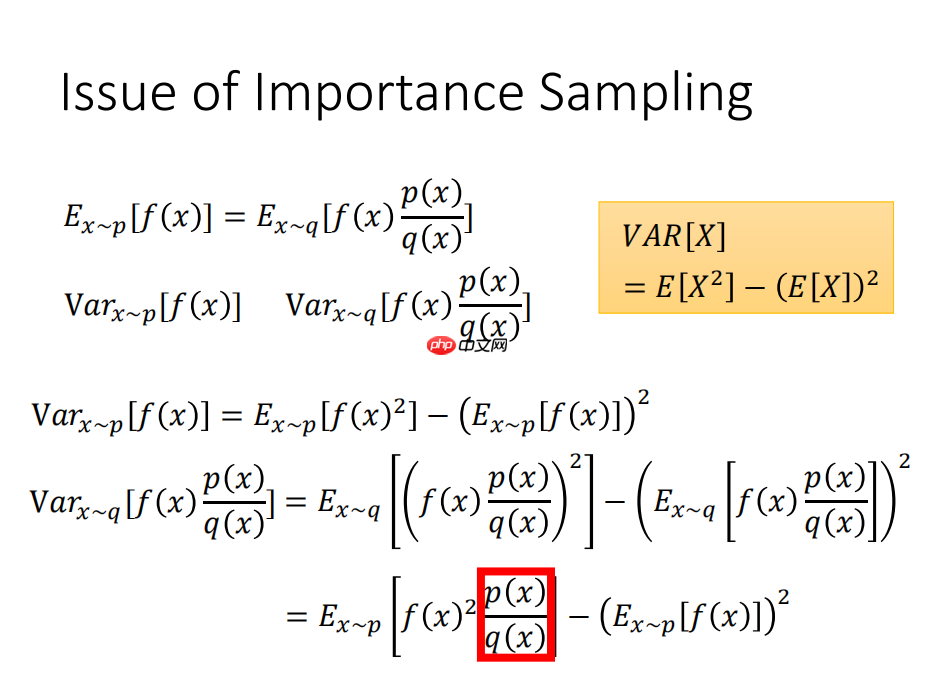
PPO2的核心思想很简单,对于ratio 也就是当前policy和旧policy的偏差做clip,如果ratio偏差超过一定的范围就做clip,clip后梯度也限制在一定的范围内,神经网络更新参数也不会太离谱。这样,在实现上,无论更新多少步都没有关系,有clip给我们挡着,不担心训练偏了。
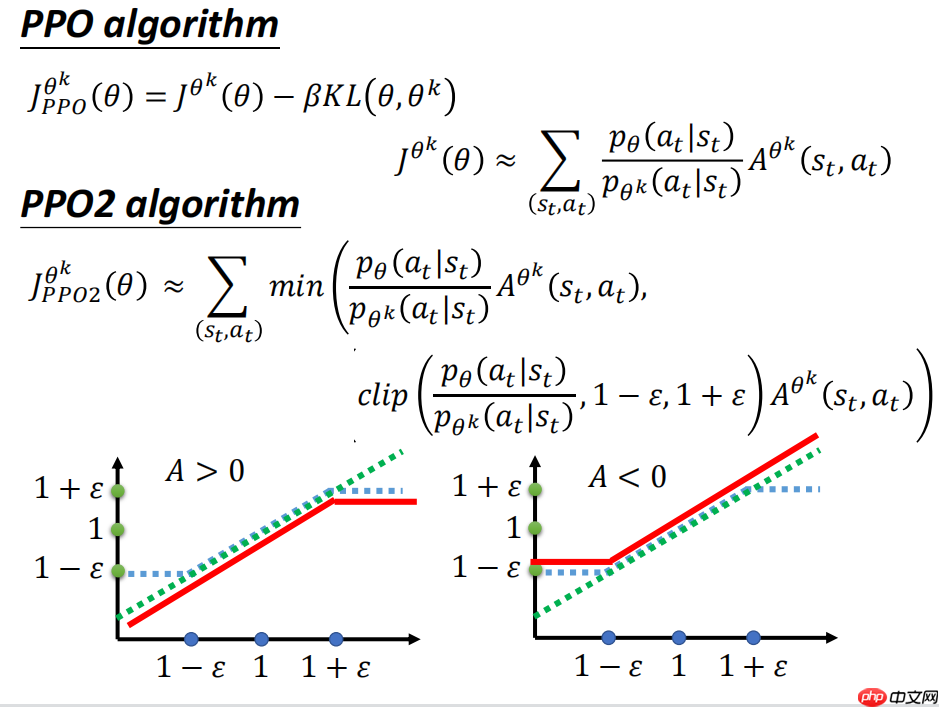
# init with datasetclass RandomDataset(Dataset):
def __init__(self, num_samples):
self.num_samples = num_samples def __getitem__(self, idx):
pass
def __len__(self):
return self.num_samplesclass PPO():
clip_param = 0.2
max_grad_norm = 0.5
ppo_update_time = 10
buffer_capacity = 8000
batch_size = 64
## 初始化参数
def __init__(self):
super(PPO, self).__init__()
self.actor_net = Actor()
self.critic_net = Critic()
self.buffer = []
self.counter = 0
self.training_step = 0
self.writer = LogWriter('./exp')
clip = nn.ClipGradByNorm(self.max_grad_norm)
self.actor_optimizer = optim.Adam(parameters = self.actor_net.parameters(),learning_rate= 1e-3, grad_clip=clip)
self.critic_net_optimizer = optim.Adam(parameters = self.critic_net.parameters(), learning_rate=3e-3,grad_clip=clip) if not os.path.exists('./param'):
os.makedirs('./param/net_param')
os.makedirs('./param/img') # 选择动作
def select_action(self, state):
state = paddle.to_tensor(state,dtype="float32").unsqueeze(0) with paddle.no_grad():
action_prob = self.actor_net(state)
dist = Categorical(action_prob)
action = dist.sample([1]).squeeze(0)
action = action.cpu().numpy()[0] return action, action_prob[:, int(action)].numpy()[0] # 评估值
def get_value(self, state):
state = paddle.to_tensor(state) with paddle.no_grad():
value = self.critic_net(state) return value.numpy() def save_param(self):
paddle.save(self.actor_net.state_dict(), './param/net_param/actor_net' + str(time.time())[:10] +'.param')
paddle.save(self.critic_net.state_dict(), './param/net_param/critic_net' + str(time.time())[:10] +'.param') def store_transition(self, transition):
self.buffer.append(transition)
self.counter += 1
def update(self, i_ep):
state = paddle.to_tensor([t.state for t in self.buffer], dtype="float32")
action = paddle.to_tensor([t.action for t in self.buffer], dtype="int64").reshape([-1, 1])
reward = [t.reward for t in self.buffer] # update: don't need next_state
old_action_prob = paddle.to_tensor([t.action_prob for t in self.buffer], dtype="float32").reshape([-1, 1])
R = 0
Gt = [] for r in reward[::-1]:
R = r + gamma * R
Gt.insert(0, R)
Gt = paddle.to_tensor(Gt, dtype="float32") # print("The agent is updateing....")
for i in range(self.ppo_update_time): for index in BatchSampler(sampler=RandomSampler(RandomDataset(len(self.buffer))), batch_size=self.batch_size, drop_last=False): if self.training_step % 1000 == 0: print('I_ep {} ,train {} times'.format(i_ep, self.training_step))
self.save_param()
index = paddle.to_tensor(index)
Gt_index = paddle.index_select(x=Gt, index=index).reshape([-1, 1])
# V = self.critic_net(state[index])
V = self.critic_net(paddle.index_select(state,index))
delta = Gt_index - V
advantage = delta.detach() # epoch iteration, PPO core!!!
action_prob = self.actor_net(paddle.index_select(state,index)) # new policy
action_prob = paddle.concat([action_prob[i][int(paddle.index_select(action,index)[i])] for i in range(len(action_prob))]).reshape([-1,1])
ratio = (action_prob / paddle.index_select(old_action_prob,index))
surr1 = ratio * advantage
surr2 = paddle.clip(ratio, 1 - self.clip_param, 1 + self.clip_param) * advantage # update actor network
surr = paddle.concat([surr1,surr2],1)
action_loss = -paddle.min(surr,1).mean() # MAX->MIN desent
self.writer.add_scalar('loss/action_loss', action_loss, self.training_step)
self.actor_optimizer.clear_grad()
action_loss.backward()
self.actor_optimizer.step() # update critic network
value_loss = F.mse_loss(Gt_index, V)
self.writer.add_scalar('loss/value_loss', value_loss, self.training_step)
self.critic_net_optimizer.clear_grad()
value_loss.backward()
self.critic_net_optimizer.step()
self.training_step += 1
del self.buffer[:] # clear experiencedef main():
agent = PPO() for i_epoch in range(1000):
state = env.reset() if render: env.render() for t in count():
action, action_prob = agent.select_action(state)
next_state, reward, done, _ = env.step(action)
trans = Transition(state, action, action_prob, reward, next_state) if render: env.render()
agent.store_transition(trans)
state = next_state if done : if len(agent.buffer) >= agent.batch_size: agent.update(i_epoch)
agent.writer.add_scalar('Steptime/steptime', t, i_epoch) # print("Number of steps to achieve the goal:{} , Steptime:{}".format(t,i_epoch))
breakif __name__ == '__main__':
main() print("end")I_ep 0 ,train 0 times I_ep 0 ,train 1000 times I_ep 0 ,train 2000 times I_ep 0 ,train 3000 times I_ep 0 ,train 4000 times I_ep 0 ,train 5000 times I_ep 1 ,train 6000 times I_ep 5 ,train 7000 times I_ep 11 ,train 8000 times I_ep 19 ,train 9000 times I_ep 34 ,train 10000 times I_ep 60 ,train 11000 times I_ep 89 ,train 12000 times I_ep 120 ,train 13000 times I_ep 150 ,train 14000 times I_ep 182 ,train 15000 times I_ep 211 ,train 16000 times I_ep 242 ,train 17000 times I_ep 273 ,train 18000 times I_ep 303 ,train 19000 times I_ep 333 ,train 20000 times I_ep 364 ,train 21000 times I_ep 398 ,train 22000 times I_ep 431 ,train 23000 times I_ep 461 ,train 24000 times I_ep 494 ,train 25000 times I_ep 529 ,train 26000 times I_ep 565 ,train 27000 times I_ep 596 ,train 28000 times I_ep 631 ,train 29000 times I_ep 659 ,train 30000 times I_ep 694 ,train 31000 times I_ep 728 ,train 32000 times I_ep 763 ,train 33000 times I_ep 797 ,train 34000 times I_ep 833 ,train 35000 times I_ep 872 ,train 36000 times I_ep 910 ,train 37000 times I_ep 945 ,train 38000 times I_ep 983 ,train 39000 times end
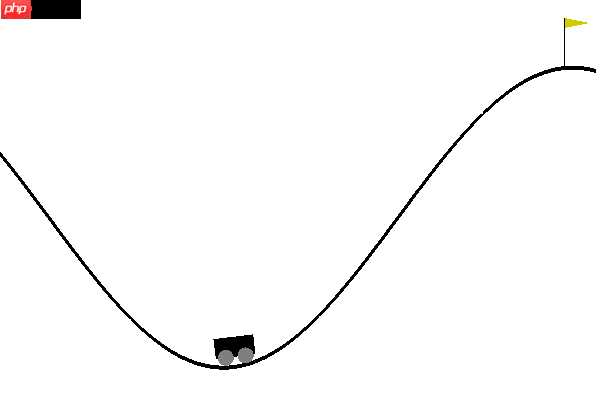
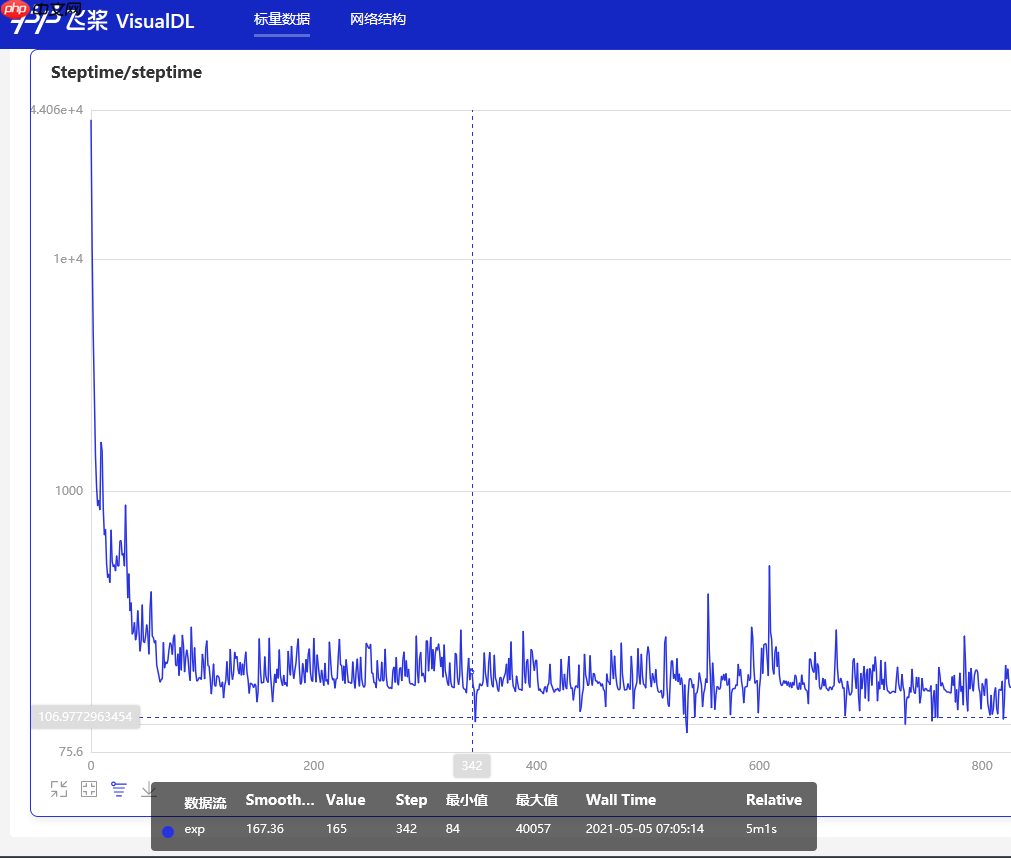
以上就是近端策略优化PPO-算法简析-paddle2.0的详细内容,更多请关注php中文网其它相关文章!

每个人都需要一台速度更快、更稳定的 PC。随着时间的推移,垃圾文件、旧注册表数据和不必要的后台进程会占用资源并降低性能。幸运的是,许多工具可以让 Windows 保持平稳运行。

Copyright 2014-2025 https://www.php.cn/ All Rights Reserved | php.cn | 湘ICP备2023035733号